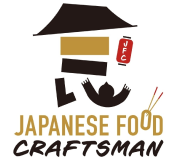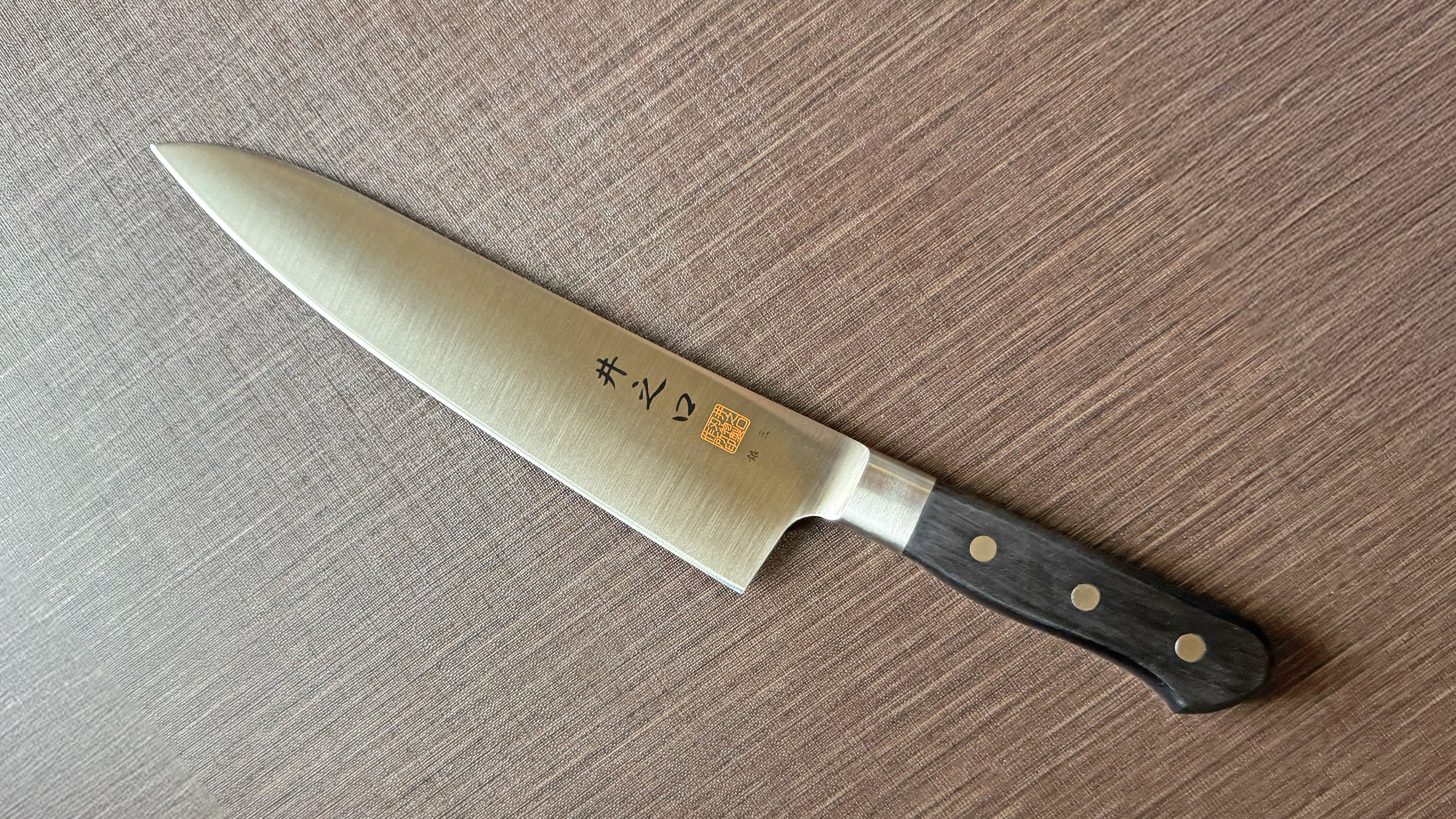

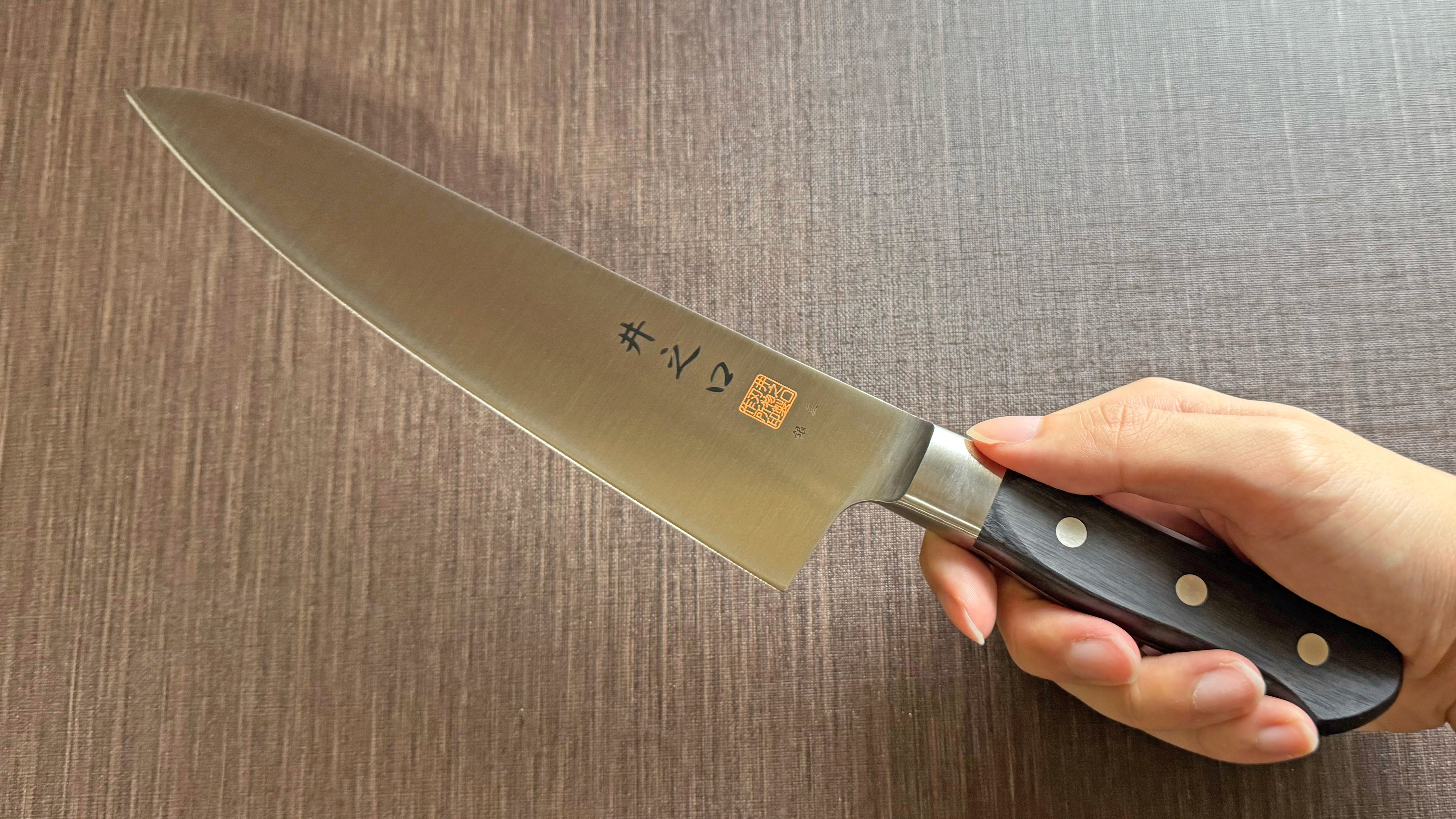

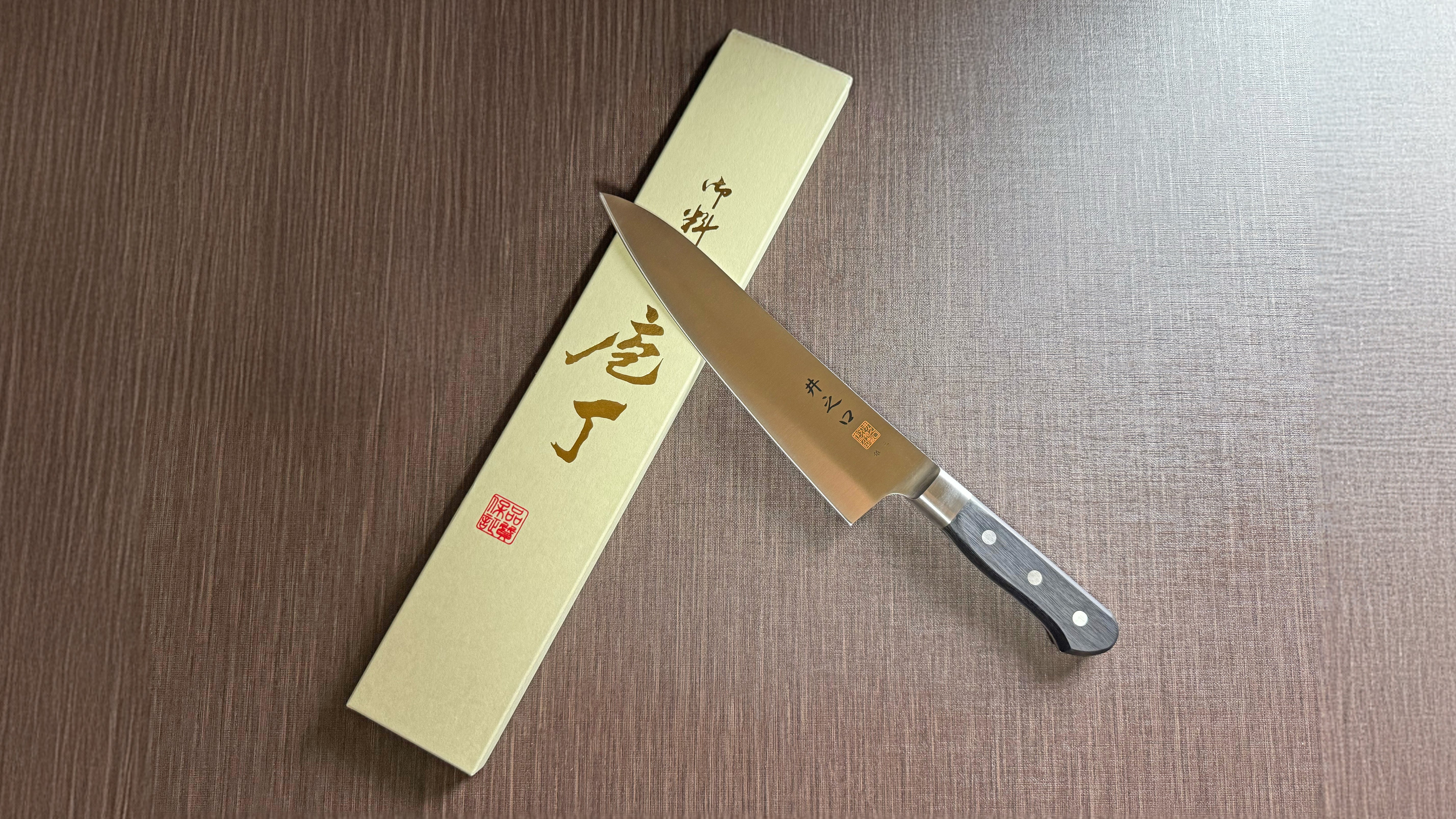







Inoguchi Hamono Western Santoku Knife 21cm
Includes:
- Western-Style Santoku Kitchen Knife (handcrafted from Ginsan No. 3 stainless steel, 21cm blade length)
- FREE WORLDWIDE SHIPPING
This Western-Style Santoku Knife is handcrafted from Ginsan No. 3 stainless steel at Inoguchi Hamono, a smithy which operates out of the renowned knife-making city of Seki, and features a laminated wood handle.
Its stainless steel blade is both rust-resistant and contains enough carbon to offer an exceptionally sharp, long-lasting edge which is easy to sharpen. Each knife is hand-finished by skilled artisans, the whole process including the final sharpening carried out entirely in-house at Inoguchi Hamono.
Unlike many Japanese knives made with the traditional warikomi lamination method, this Inoguchi Hamono knife is crafted with a mono-steel blade, providing superior sharpness, consistent edge retention, and a clean, direct cutting feel. If the blade chips, it can be repaired by sharpening, making it the perfect long-lasting companion for your kitchen.
Santoku knives feature a double-edged blade for balanced, versatile cutting, making them ideal for everyday use in both home and professional kitchens.
Specifications
- Blade Length: 210mm
- Blade Type: Double-edged
- Blade Material: Ginsan No. 3 stainless steel
- Handle: Laminated wood
*Depending on the value of your order and local import rules in your country, you may be required to pay additional import taxes when your package arrives.
Inoguchi Hamono: Seki tradition with purposeful innovation, built for an edge that lasts a lifetime
AS FEATURED ON YOUTUBE
Visit the Inoguchi Hamono workshop in Seki, Gifu. You’ll see full-steel blades ground in-house, start to finish, to control geometry, bite, and durability.
OVERVIEW
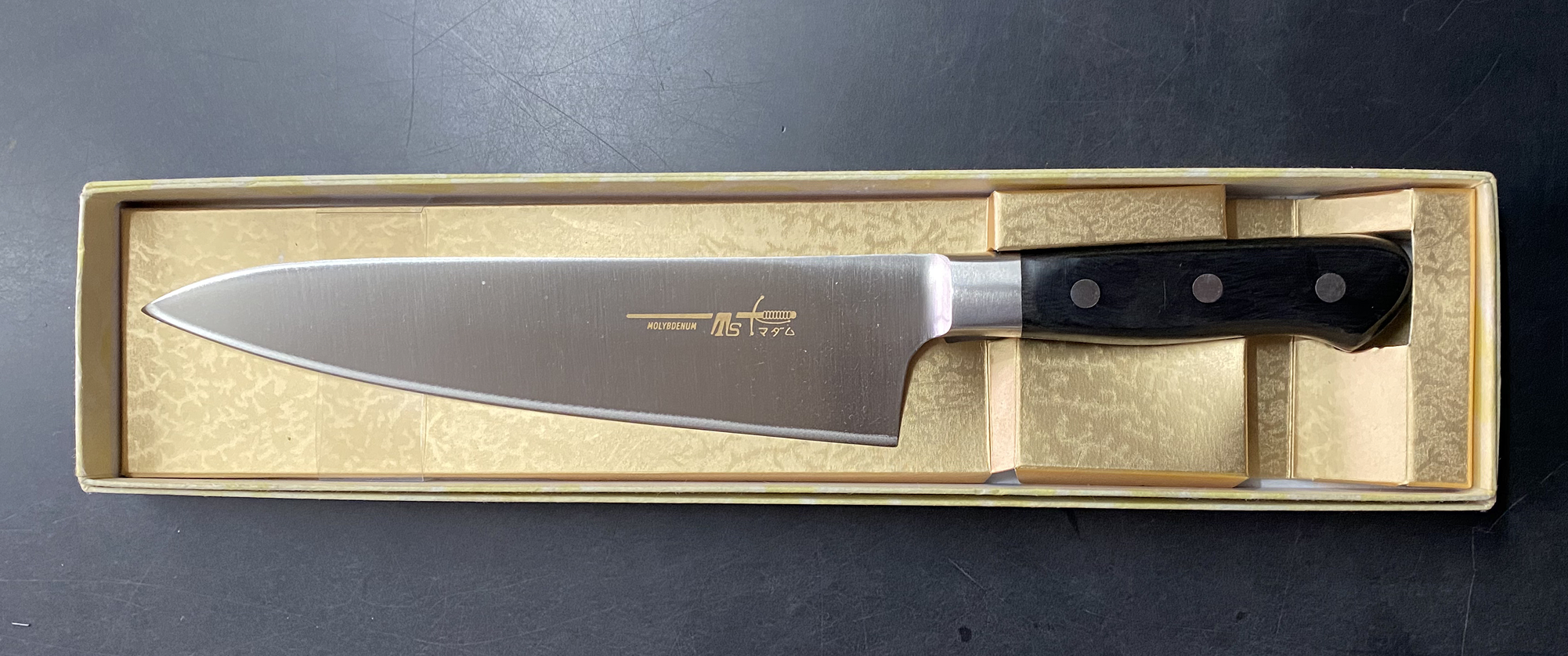
Cooking with Joy. Crafted in Seki.
Seki is a knife town with more than seven centuries behind it. In 1960, Inoguchi Hamono Seisakusho set up there and has stayed in the same tradition across four generations.
The workshop’s aim is disarmingly simple: let people feel the joy of cooking through a knife that works. Machines handle repetition. The judgement that defines a blade, how thin, how even, how it meets the board, stays with the makers. That is why the final edge is always set inside the factory.
The Craft Behind a Blade: From Fencing Strips to Kitchen Cuts
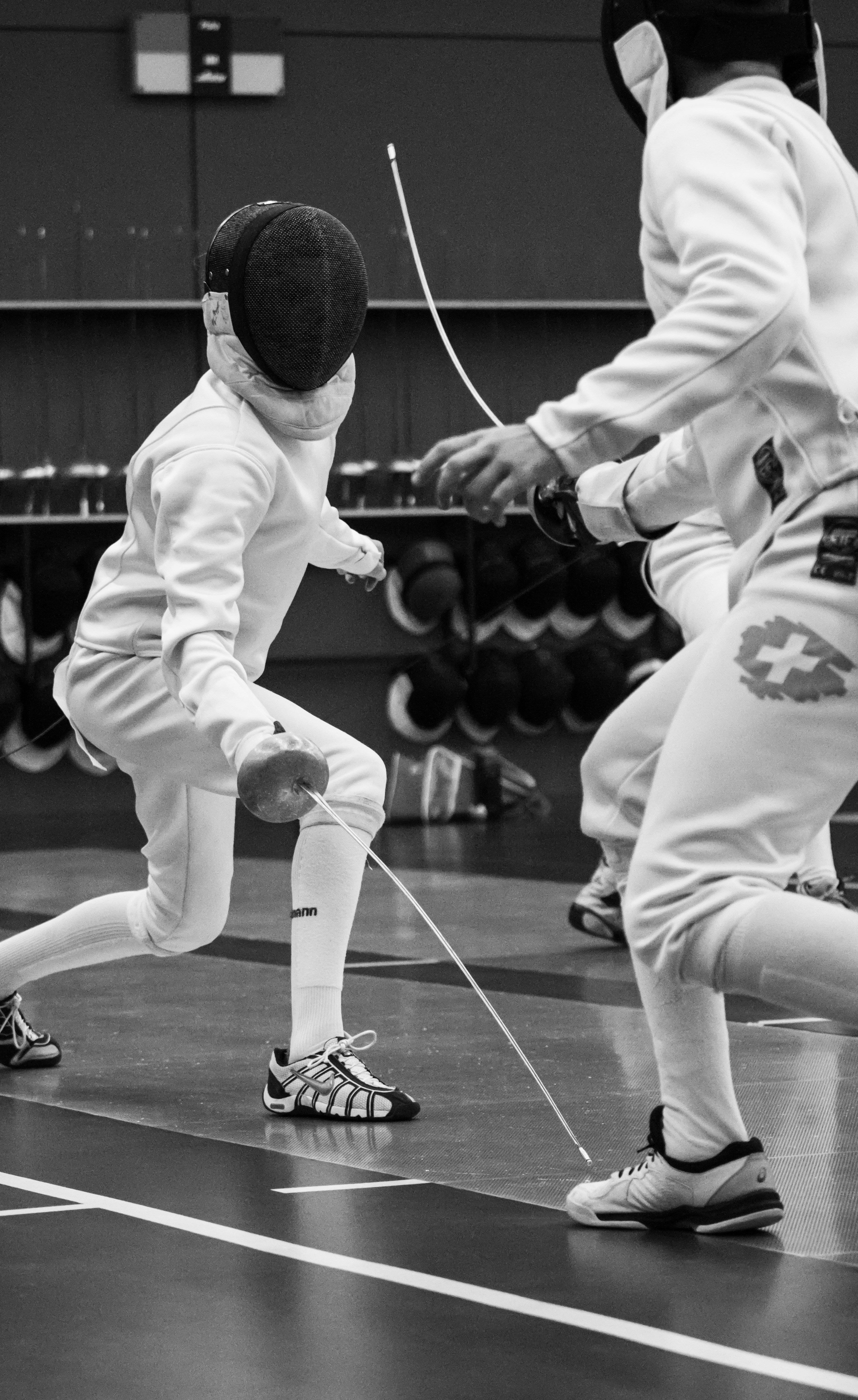
Olympic steel, kitchen table
Inoguchi Hamono once held a rare place in Japan’s cutlery industry, crafting fencing swords used by Olympic athletes. At the time, only two or three manufacturers in the entire country had the skill and machinery to do it. Working under commission from Tokyo Sports Trading, Inoguchi Hamono even built custom equipment to meet the exacting demands of the sport.
At first glance, an elegant fencing blade and a kitchen knife couldn’t be more different. Yet both are born from the same pursuit: drawing out the steel’s true potential.
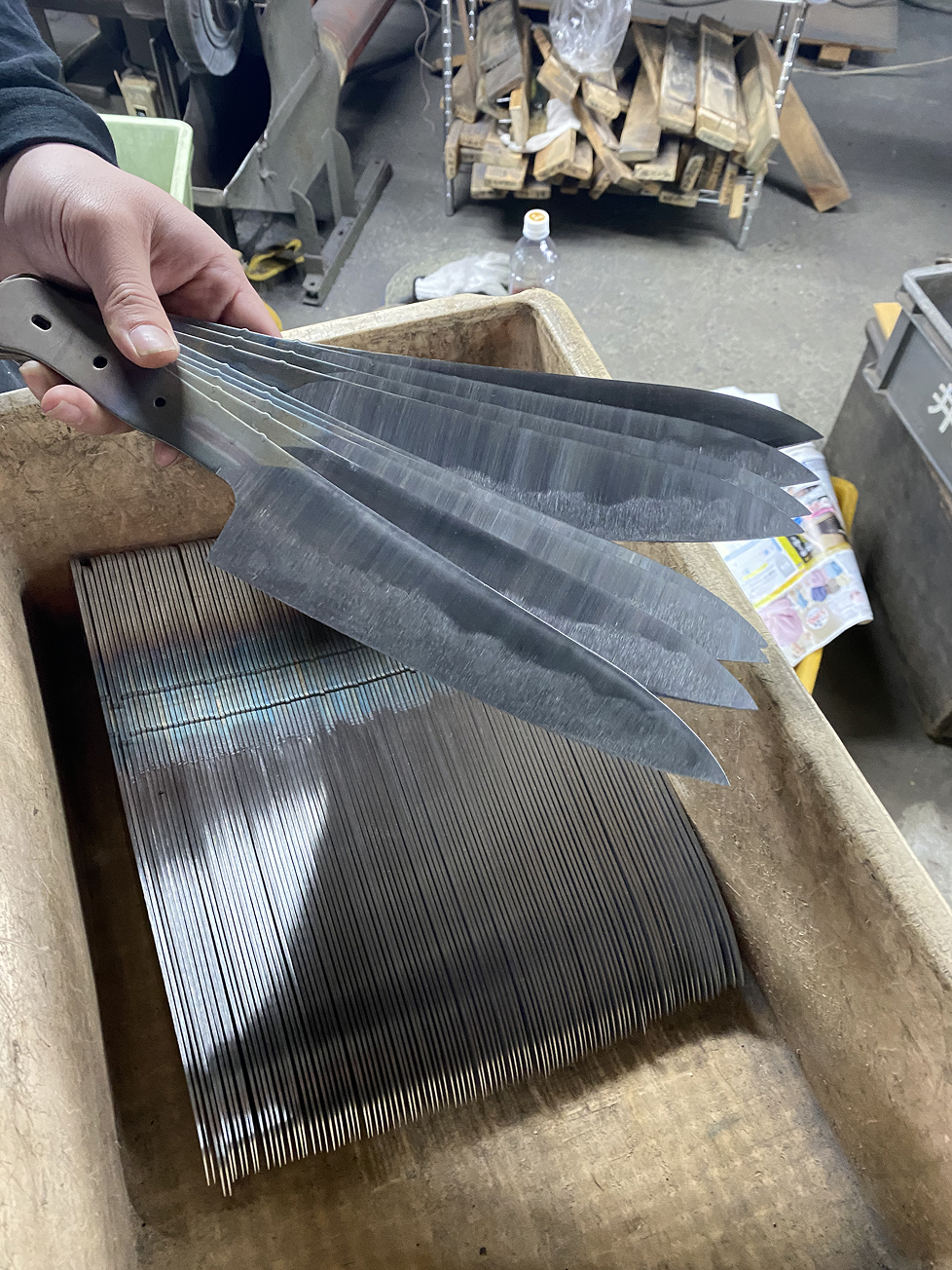
What we Kept from Swordcraft
Through years of swordsmithing and crafting fencing blades, Inoguchi Hamono has honed a deep understanding of how to handle delicate edges.
That same expertise drives their unwavering commitment to in-house sharpening today. Every blade is finished within their own workshop, a continuation of the craftsmanship that once shaped steel for both competition and tradition.
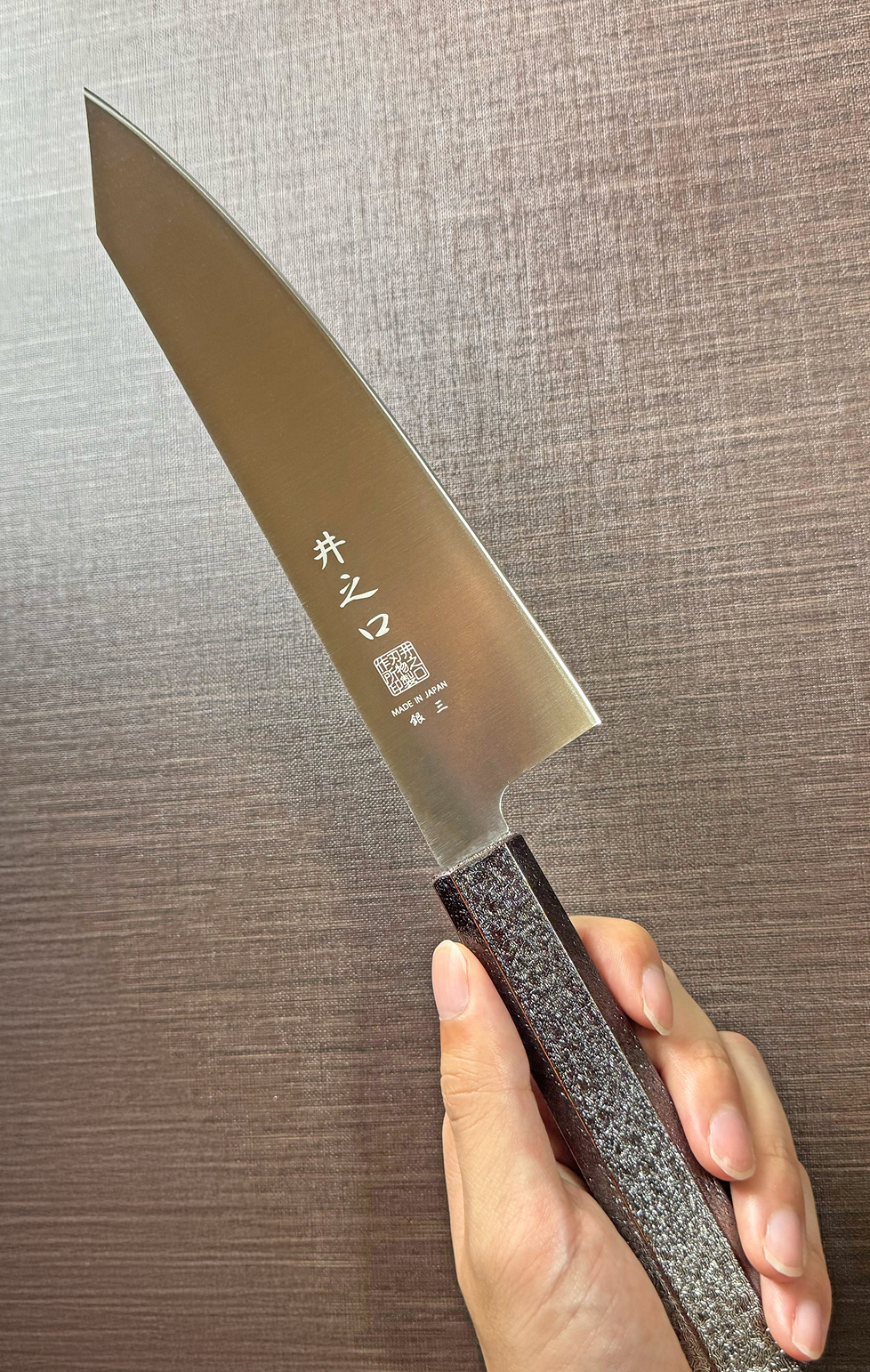
The Heat That Shapes Resilience
A fencing sword demands an essential quality—resilience. It must bend deeply without breaking, enduring every strike and return. To achieve this strength, Inoguchi Hamono developed a unique heat-treatment process that repeats cycles of quenching and tempering to draw out the steel’s toughness.
That same mastery of heat now defines their knife-making, producing blades that resist chipping, sharpen smoothly, and hold their edge with enduring strength.
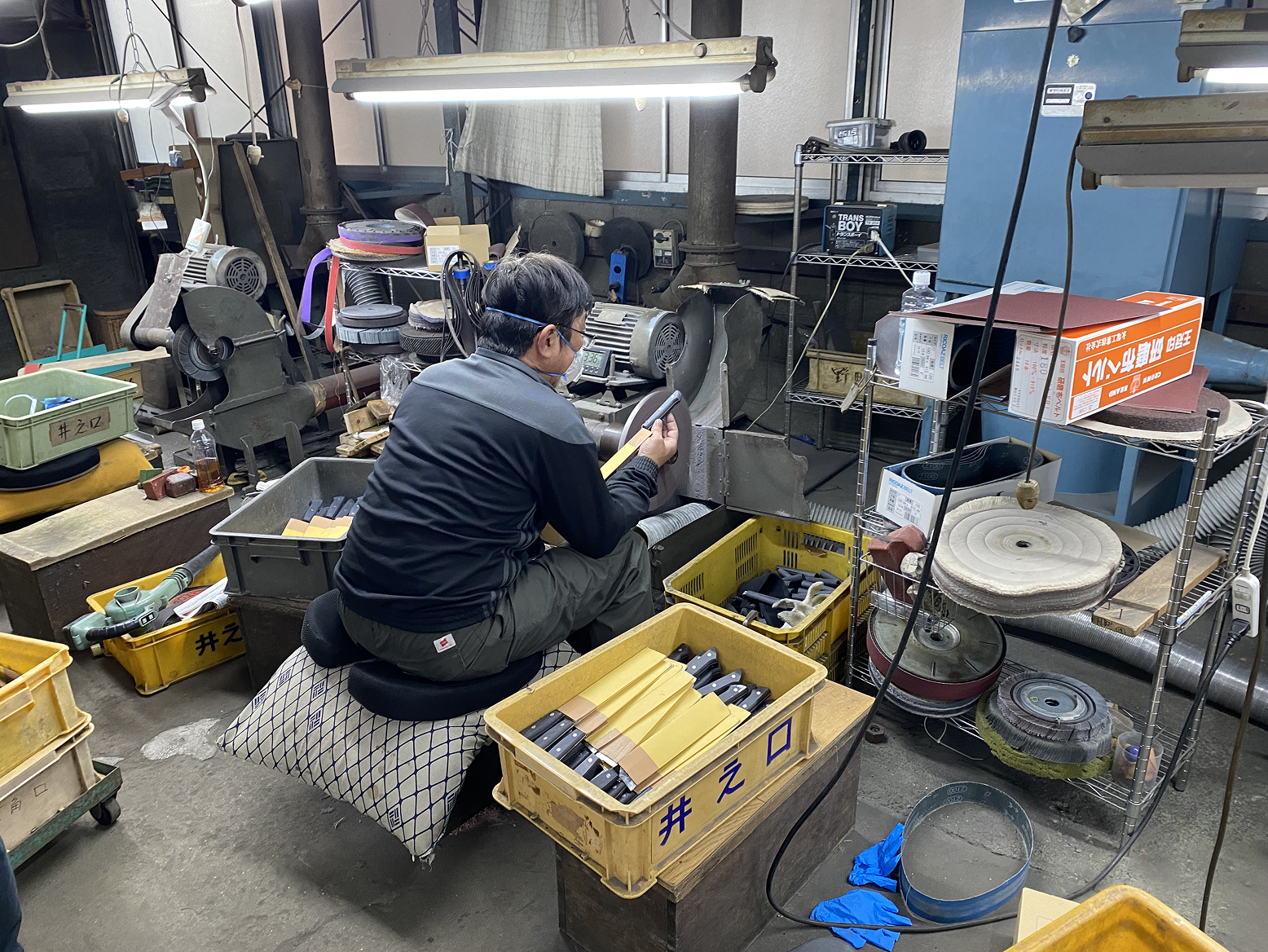
The Enduring Art of In-House Sharpening
Sharpening is often said to be the most decisive stage in knife-making, the moment that determines how a blade will truly perform. While many manufacturers now outsource this process to reduce costs and increase efficiency, Inoguchi Hamono has kept it entirely in-house since its founding.
Across four generations, their craftsmen have refined the skill and intuition required to bring each edge to life. Every knife is shaped, polished, and inspected under one roof, ensuring not only consistent quality but also the soul of craftsmanship that endures in every cut.
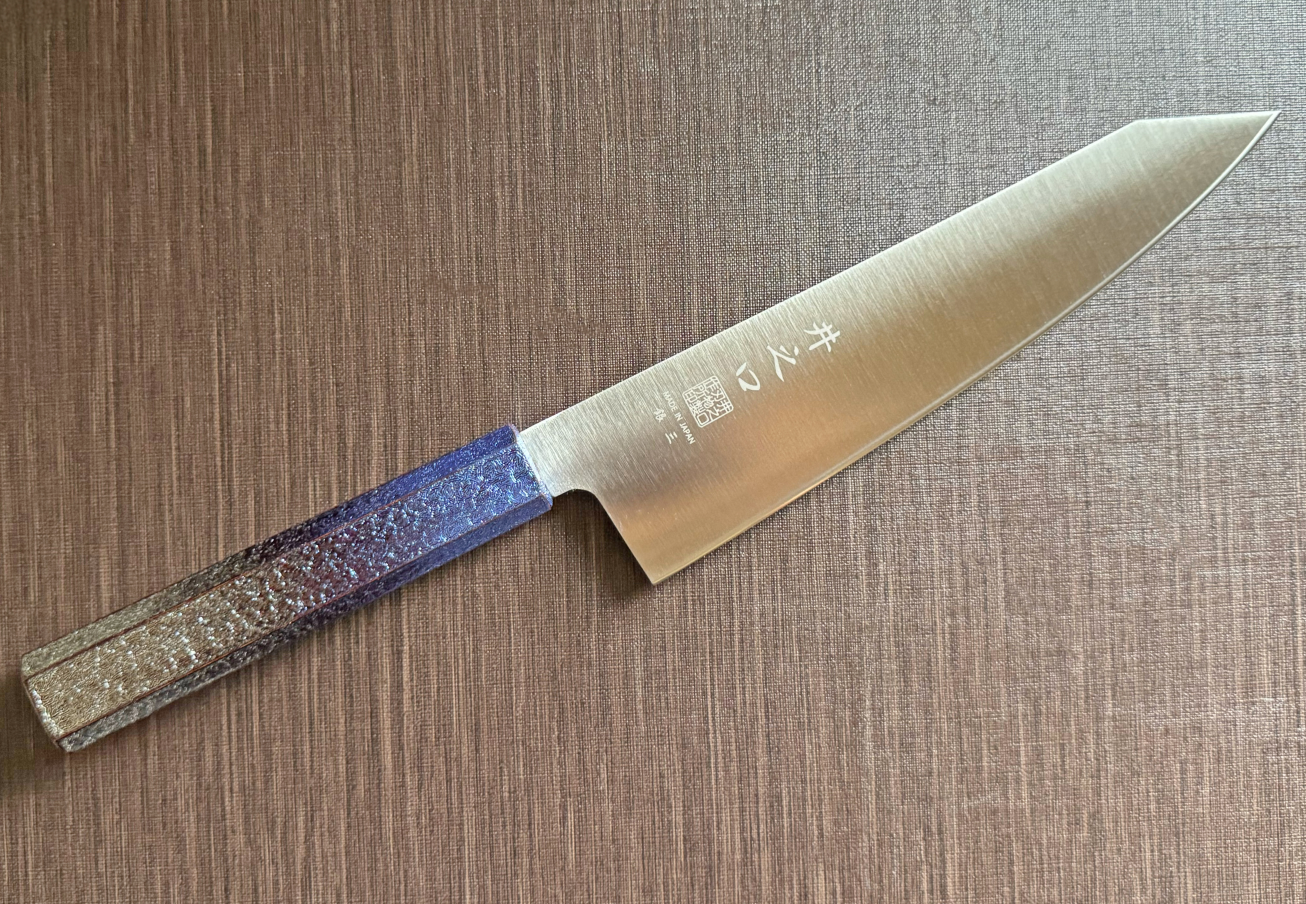
Ginsan No.3: Stainless with a Bite
The house steel is Ginsan No. 3. It is stainless, yet high enough in carbon to take a crisp, clean apex and hold it. On the stone it feels precise.
In the kitchen it gives you sharpness with the everyday ease of stainless care. Pros appreciate the stability. Home cooks appreciate the low maintenance.
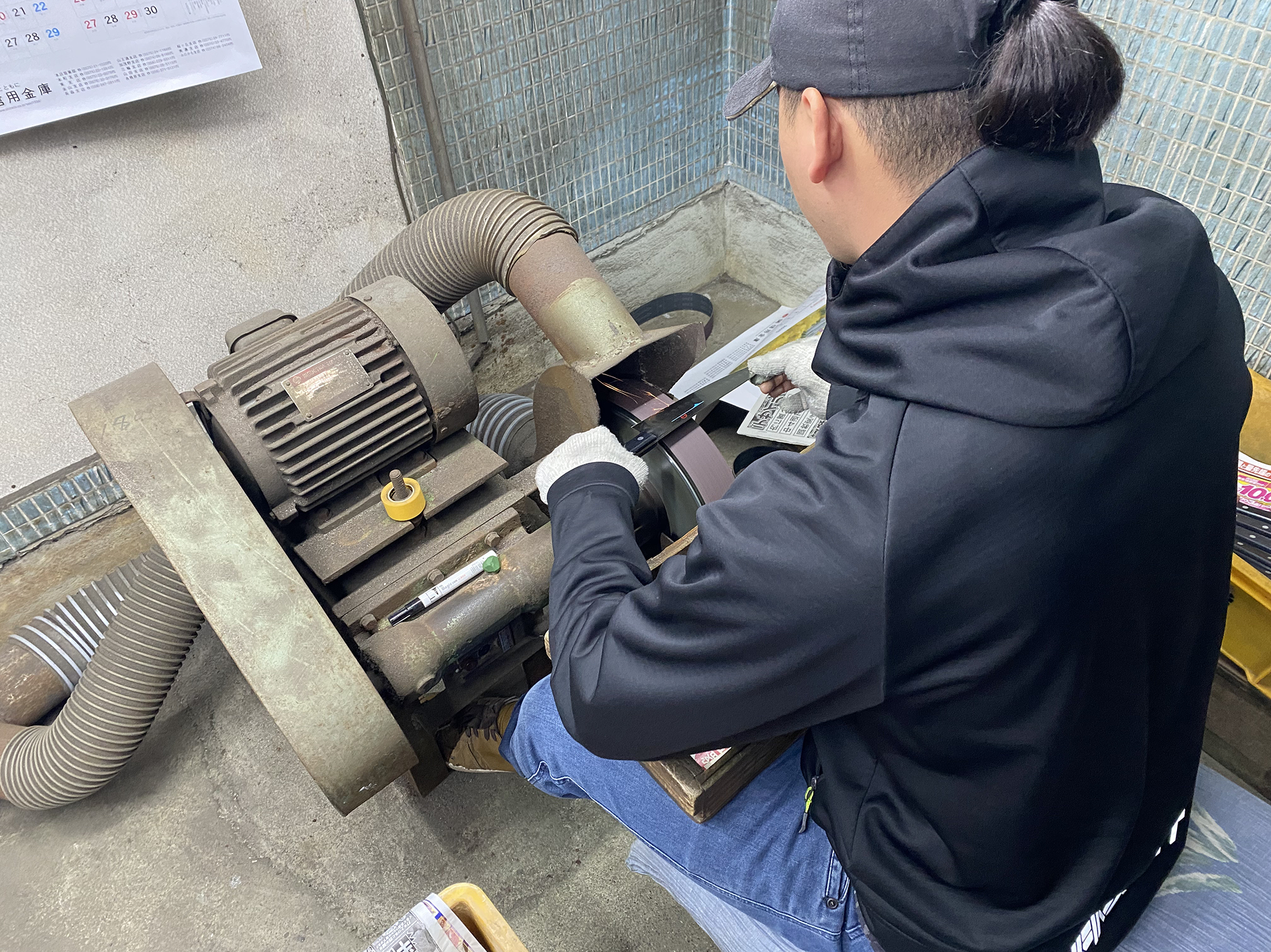
Why Inoguchi chooses Monosteel
At present, many knives on the market are “warikomi” knives made by laminating different steels. Inoguchi Hamono, however, has adhered to “monosteel knives” as a house tradition since its founding. There are clear reasons for this choice.
Sharpness and Edge Retention
Because the same steel runs in a single piece right to the edge, the blade bites into ingredients extremely well. It is also easier to raise a very fine edge than on laminated knives, and once sharpened the edge lasts longer.
Ease of Sharpening and Recovery
Because the whole blade is a uniform material, resistance on the stone is consistent and the feel of the edge is transmitted directly to the hand. Even if the edge chips, it is easy to correct by regrinding the entire blade, and repeated sharpening lets you use it for a long time.
Direct Feel of the Edge
With a monosteel knife, the sensation of the edge entering the cut is conveyed straight to the hand at the moment of cutting. This “feel of the steel” heightens the pleasure of handling a knife and is especially appreciated by professionals and enthusiasts who pursue their craft.
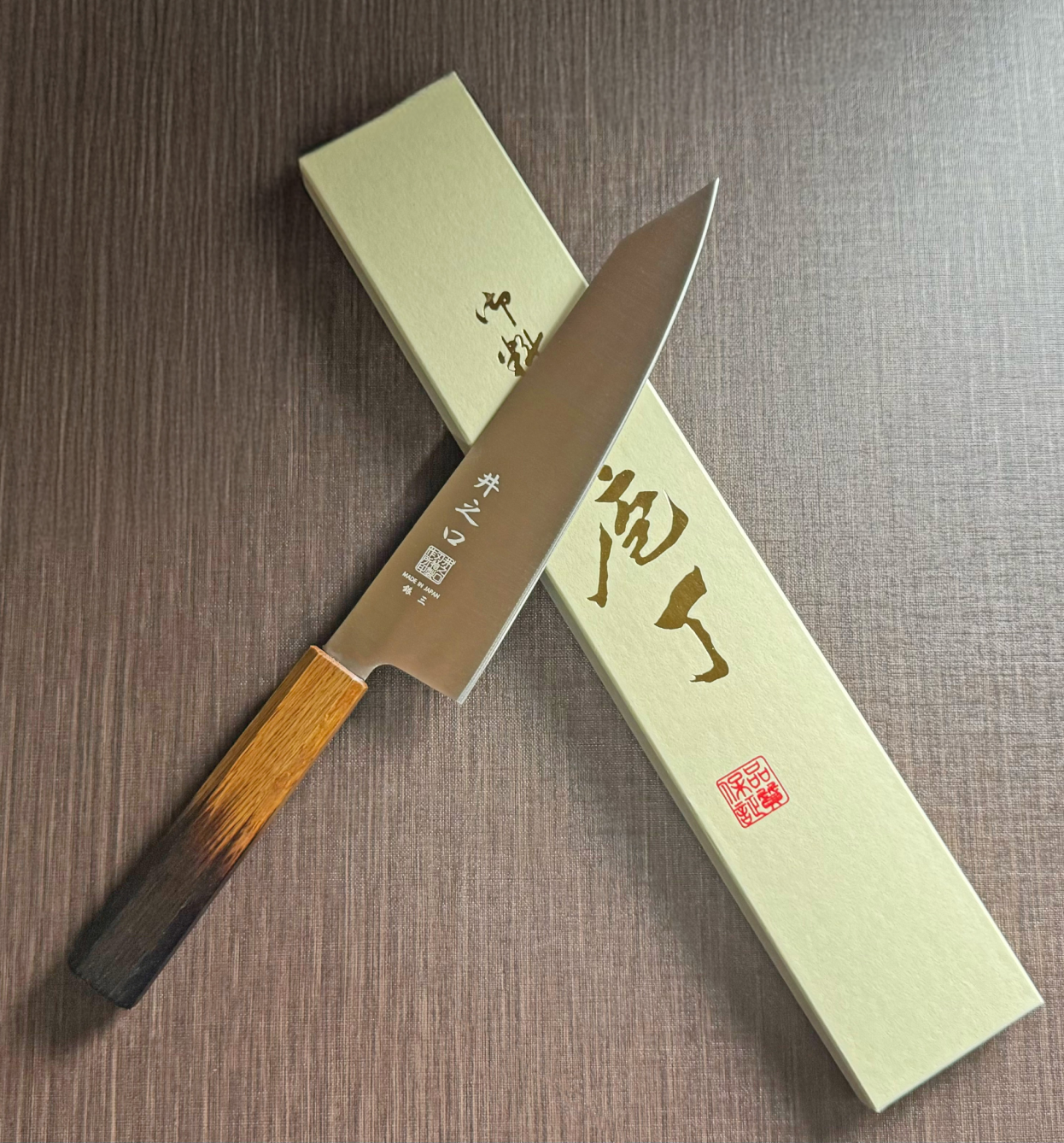
More Than a Tool, A True Partner in Cooking
An Inoguchi monosteel knife is not just a mere tool. It settles into the user’s hand and becomes a partner that brings out the joys of cooking to the fullest.
Message From the Makers
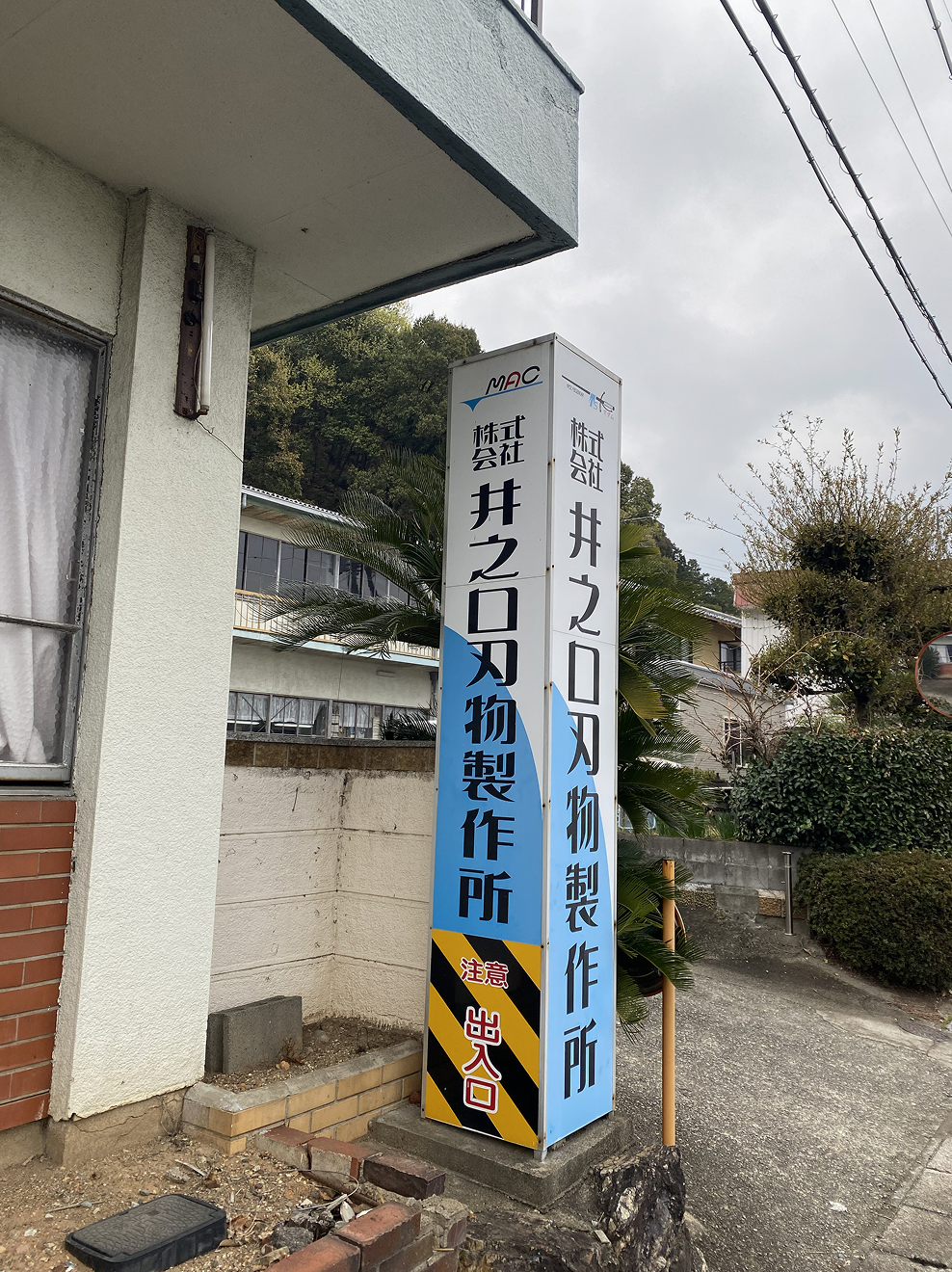
Since our founding in 1948, Inoguchi Hamono Seisakusho has pursued sharpness and durability through proprietary forging methods.
Craftspeople who have inherited traditional techniques apply exacting standards, finishing each blade one by one with care.
How to Sharpen your knife
Here is a detailed video on how to use the included sharpening stone, with explanations from Minomo blacksmith Isamu-san!
